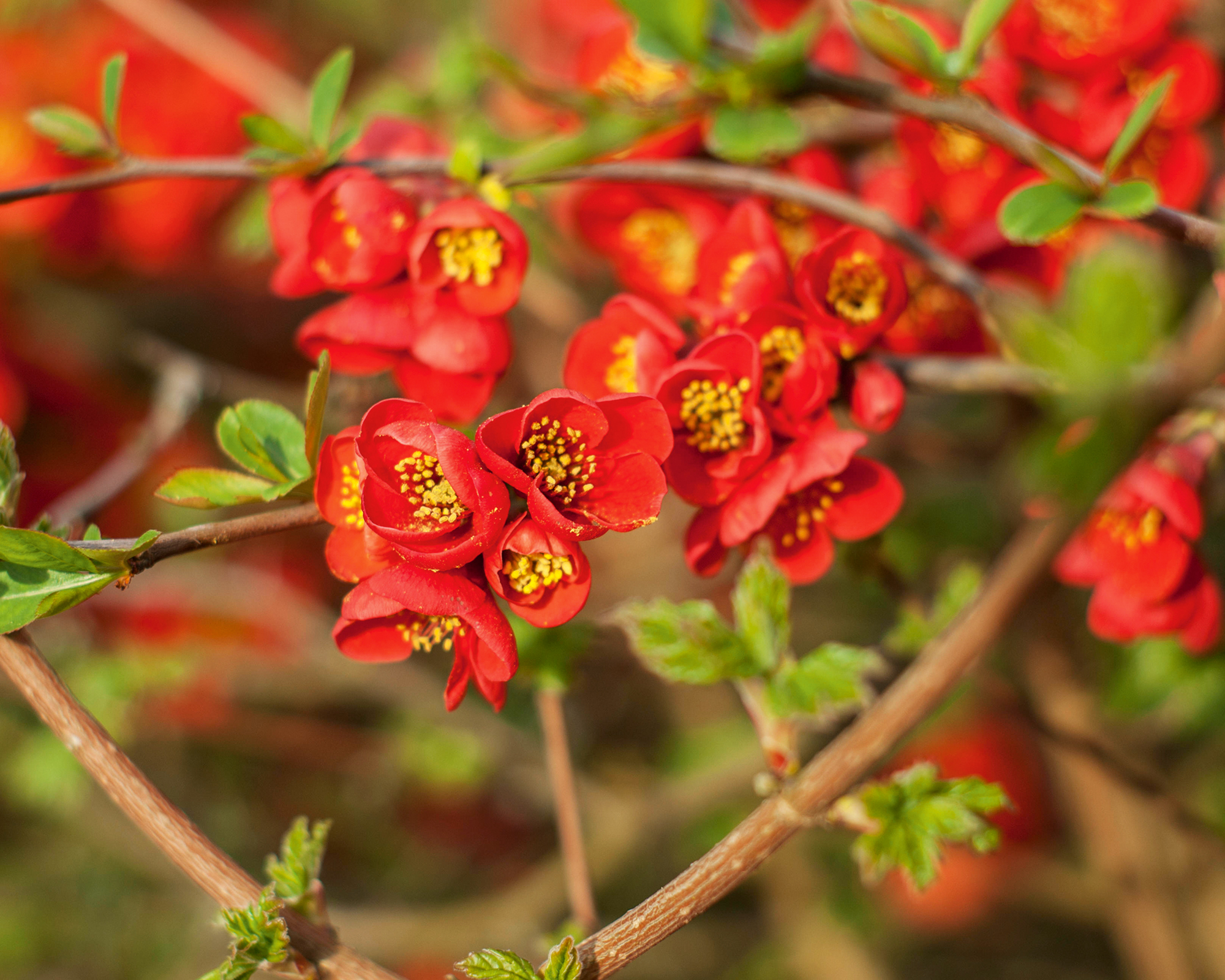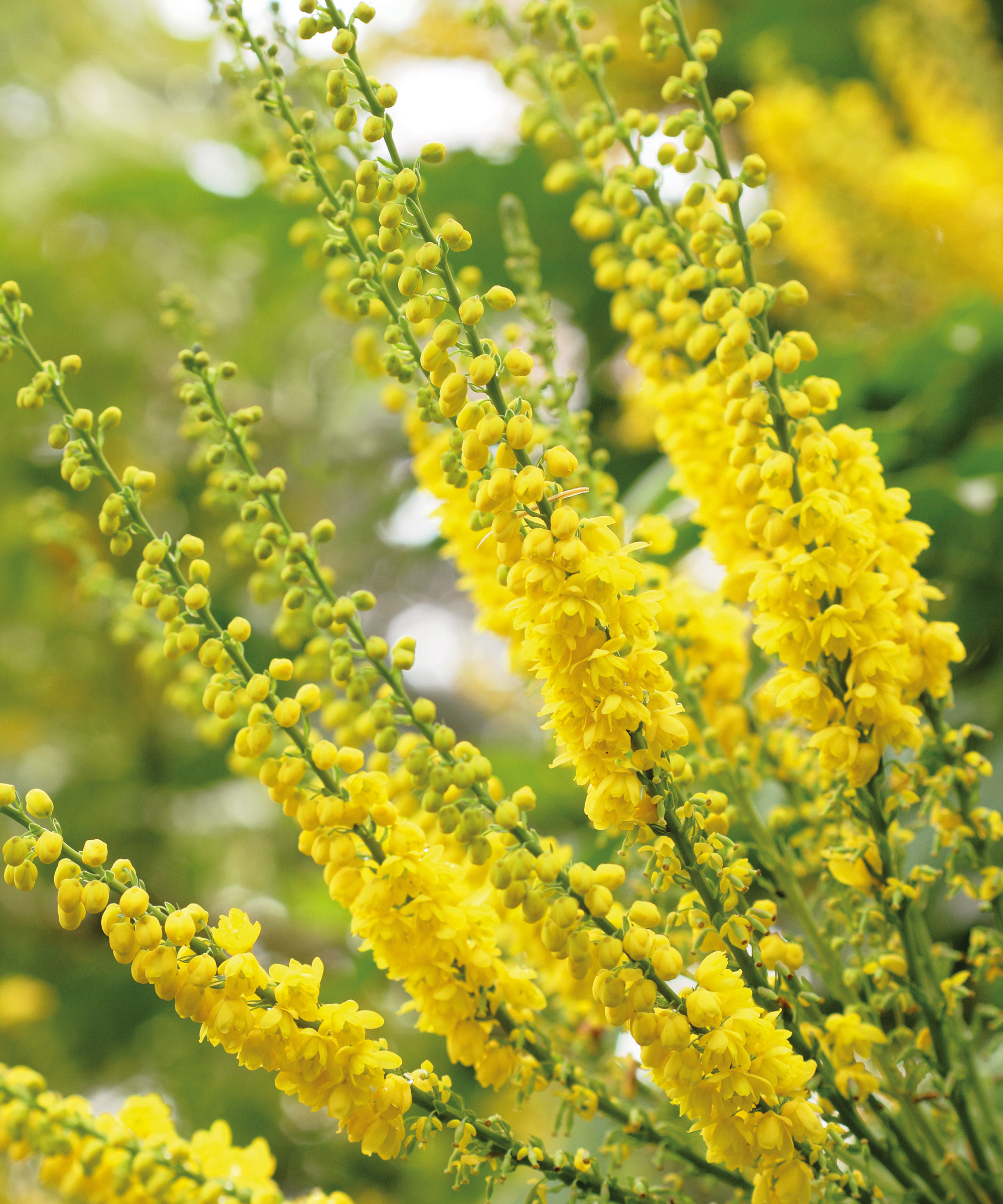8 Winter-Flowering Shrubs To Plant In Fall – For A Burst Of Joyful Color In The Bleakest Months
Plant these winter-blooming beauties in the autumn to give them a chance to establish themselves before the deep chill sets in.


Flowering plants in the winter are hard to come by but a welcome sight in gardens when everything else is dull, drab, and has lost its leaves. Most plants are dormant at this time of year, resting under a blanket of frost, but there are some stunning, resilient varieties that will enliven your landscape until spring.
A thoughtful winter garden design will use a combination of different shrubs and trees that add structure with evergreen leaves, and offer interest from colorful flowers and vibrant berries. Many winter-blooming plants are also hardy and low-maintenance, giving maximum joy with little effort for the gardener.
Fall is an excellent time to plant bushes and shrubs. That is because the soil is still workable and warm. The cooler air will encourage root formation, allowing the plant to establish quickly before freezing temperatures take over. At this time of year, there also tends to be more natural moisture from rainfall and morning dew, which means you need to water less as the plant becomes used to its new site.
Our pick of winter-flowering shrubs will reinvigorate your garden through the cold season and reassure you that spring is around the corner.
1. Witch Hazel

Witch hazels are V-shaped plants that can become small trees over time. They are deciduous but, even without leaves, they will produce flowers.
The common witch hazel is a North American native found wild in the north-east to south-east and thrives in USDA hardiness zones 3 to 9. Plants have the potential to grow up to 30 feet (9m) tall but are generally around 15 feet (4.6m) tall with a spread around half as wide.
Witch hazel produces tasseled, bright yellow flowers late in the winter season. The blooms have a lightly spicy fragrance and last for up to 8 weeks. They are a welcome bright spot in a cold, desolate winter landscape.
Sign up for the Gardening Know How newsletter today and receive a free copy of our e-book "How to Grow Delicious Tomatoes".
2. Camellia

A grand dame of the garden, the camellia flaunts its flowers in snow and ice. The glossy green leaves are attractive enough but combined with the flowers this is an outstanding shrub.
There are numerous camellia cultivars available, with a flower color spectrum spanning hot pink, white, red, coral, and yellow. These plants can get quite tall when mature and they require dappled light and well-draining soil.
Depending on the cultivar, the plants bloom in December through March. Winter-blooming camellia is Camellia sasanqua, not to be confused with its cousin, the spring-blooming Camellia japonica. Each flower only lasts a few days but the plant is so prolific, flowers will be on the shrub for 6 weeks or more.
Camellia sasanqua thrives in USDA zones USDA zones 7 to 9, but some varieties are suitable for zones 6 and 10.
3. Flowering Quince

Flowering quince is related to roses and has the simple petaled flowers of a wild rose. It produces blooms well before the leaves reappear and they will become tasty fruits. The plant has small spines but they are not profuse and easy enough to avoid.
Quinces are almost pear-shaped but smaller, hard, and slightly bitter. However, their true nature shines when the fruit is cooked as a jam or jelly, or left out to ripen and added to baked goods. In the past, quince was commonly used with game meats.
Flowering quince is suitable for USDA zones 4 to 9. It can tolerate shade but will perform best in full to partial sun, with well-draining soil and average moisture.
4. Fatsia

Want to add tropical flavor to your garden? Fatsia japonica – or Japanese aralia – has lush, shiny, huge, palmate leaves. The entire plant can grow up to 7 feet (2m) tall but may easily be kept to a lower habit.
During winter, it will produce oddly shaped, rounded flowers in umbels. The flowers are bright white and dramatic against the bold foliage. They appear early in the winter season and pave the way for the later flowering shrubs.
Fatsia japonica is suitable for USDA zones 7b to 10. In a shaded location, the plant grows quite fast, but growth will be slower in full sun. It needs moist, well-drained, acidic soil. Once the flowers have faded, black berries adorn the shrub.
5. Daphne

An evergreen shrub, daphne looks similar to a dwarf rhododendron. In mid-winter, the plant produces clusters of wonderfully fragrant, rose-purple or white flowers.
Daphne shrubs are tolerant of both sun or shade, in a site where soil is moist but well draining. They thrive in USDA zones 7 to 9.
After the plant blooms, red or black berries follow, adding further winter interest. Daphne can be toxic if eaten, so take care not to install it where curious children or pets roam.
The entire plant is an attractive, naturally rounded form that rarely needs pruning.
6. Mahonia

Mahonia looks similar to Oregon grape and is in the same family. It is an evergreen plant with broad, holly-like leaves. The leaves are somewhat leather, leading to a common name of leatherleaf mahonia. Its racemes of bright yellow flowers develop late in the winter season.
This is quite a winter hardy plant suitable for USDA zones 6 to 9, and it can attain bronze or red leaf colors in cold temperatures.
After flowering the plant produces bluish black berries. The flowers are bitter but edible and the fruit is best cooked as a jam.
Mahonia prefers lightly shaded locations in midly acidic soil that is well draining.
7. Chinese Fringe Shrub

The Chinese fringe shrub, or loropetalum, is an introduced ornamental with broad, evergreen leaves. It is related to witch hazel and has that plant’s tassel, fringed blooms. It grows as a shrub up to a small tree.
Appearing late in the winter season, the flowers have many slender, spidery petals in pinks, white, and purples. They possess a delicate scent and bloom for several weeks.
Full sun with afternoon shade provides ideal conditions for this lovely shrub, which thrives in USDA zones 7 to 10. Rich, slightly acidic, moist but well-draining soil is essential. Plants do need protection from winter winds and should be heavily mulched during the cold season.
Fringe flower plants are easy to keep in the form you choose through pruning, which should be performed once flowering has finished.
8. Winter Jasmine

Hardy winter jasmine has excellent cold tolerance and is suitable for USDA zones 6 through 10. It will lose its leaves but the stems remain bright green throughout winter.
Interestingly the plant is a member of the olive family and its botanical name, Jasminum nudiflorum, refers to the flowers on the naked stems. These are funnel-shaped and brightly golden, appearing in January or February.
Winter jasmine produces arching, vine-like stems. It is quite a rangy, messy plant but may be pruned hard to keep it in check. The plant flowers on old growth. Grow it in full sun to partial shade where the soil is well draining.

Bonnie Grant is a professional landscaper with a Certification in Urban Gardening. She has been gardening and writing for 15 years. A former professional chef, she has a passion for edible landscaping.